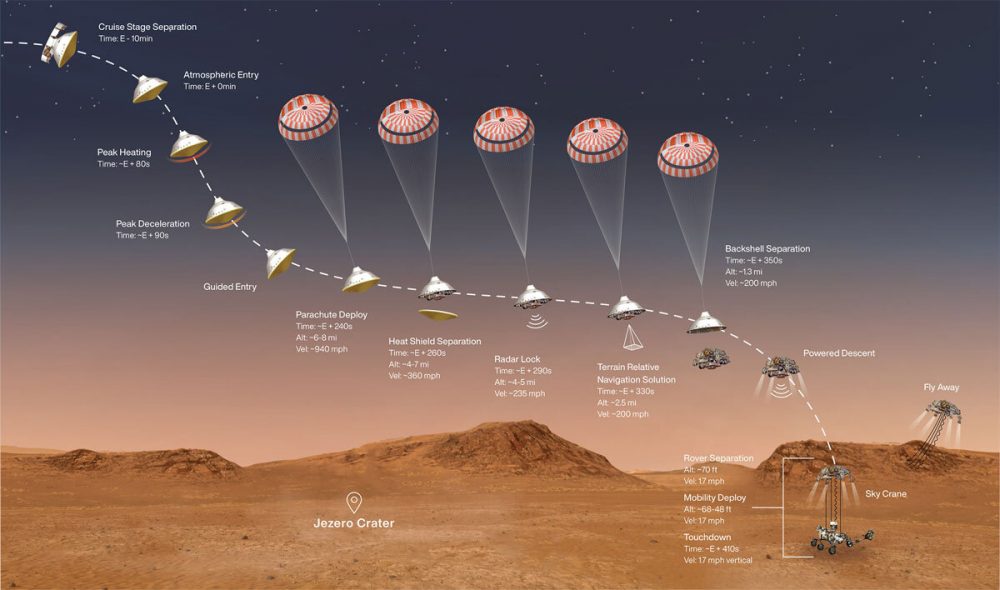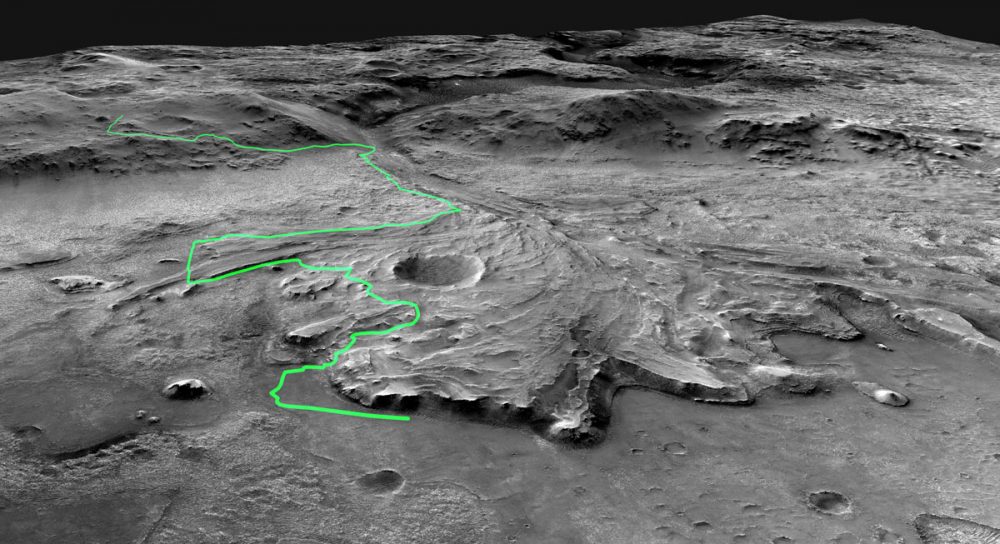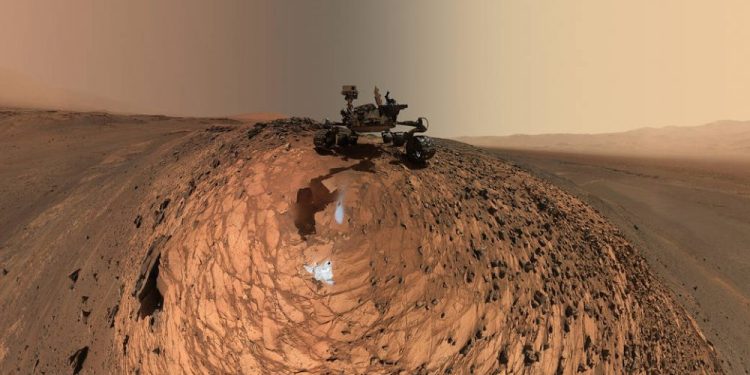Update 2021: NASA’s latest rover, Perseverance, and the first Maritan helicopter Ingenuity are already exploring Mars. To read more about Perseverance, Ingenuity, and their mission on Mars, click here.
Only three weeks separate us from the fateful day of the landing of the American mission Perseverance on Mars. On February 18, the most complex and heaviest man-made rover will reach the Red Planet. Every detail of the trip has been precisely calculated, and the mission was launched in the summer of 2020.
In any case, the big question is not “when”, but whether Perseverance will land on Mars intact or in the form of a pile of useless iron. Landing on the Martian surface is one of the most complex procedures in human astronautics, and there is no guarantee of success.
Even NASA has left no room for deceptive expectations and has repeatedly reminded us that more than half have failed of all previous missions to Mars. All the problems come from the thin atmosphere of the planet, which requires the use of a whole arsenal of landing systems, and the execution time for a proper landing is only 7 minutes. Even a moment of deviation or the slightest delay of the systems can lead to the early and unfortunate end of the mission.

The Perseverance mission will give a new impetus to the study of the geology and past of Mars, as the rover will collect important samples from the surface of the planet. The focal point, of course, is the search for ancient microbial life. However, the collected samples will have to wait as they will be collected from subsequent missions, which will be sent to Mars for this purpose only.
In any case, we’ll have to wait a few more weeks before we see the first footage of Perseverance on Mars, and until then we can enjoy this amazing video made up of footage shot by the previous (and current) missions on Mars.
The Curiosity mission itself has given us an unparalleled amount of knowledge about Mars as well as the greatest footage to date. All the images you will see in the video above are absolutely real, although some are from the previous NASA Opportunity rover which operated on the surface of Mars from 2004 to 2018. All the footage has been rendered in 4K quality which gives us the best view of the planet to date.
The Curiosity rover landed in the Gale Crater in 2012 and has so far outlived its original lifespan by more than 6 years. As far as I know, the mission was supposed to continue for about 2 years but here we are in 2021 and Curiosity will continue its research on Mars for as long as its systems work.
In its 8 years of exploring the Gale crater, Curiosity provided clear evidence that Mars’s ancient environment could have been habitable and there are different traces that suggest the possibility of ancient microbial life.
For instance, it was established that the Gale Crater was certainly able to support life billions of years ago when the atmosphere was thicker and liquid water existed.

A variety of other minerals and elements were discovered that life requires on Earth. Such are carbon, sulfur, phosphorus, and many others.
Furthermore, the Curiosity rover discovered organic molecules in the rocks in the Gale Crater, although most are truly simple. Yet again, these could be the remnants of complex organic molecules from the ancient past of Mars.
Unfortunately, the Curiosity rover was not equipped with systems that could detect life but instead, only with tools that could study the conditions on Mars and whether it was possible in the past.

With this said, the expectations for the new Perseverance rover are high, as its main goal is the search for ancient microbial life. It will be the first space mission from the 1970s to actively search for traces of past life on Mars. The last time a mission had such astronomical tasks was during the robotic Viking expeditions, which landed on the planet in 1976. Subsequent missions such as Spirit, Opportunity, Curiosity, and Insight were entirely geological.
Last but not least, the rover will complete the initial phase of further delivery of Martian rocks to Earth for further study in ground-based laboratories. For now, Perseverance will simply find out what the interesting rocks are, and then pack them in sterile containers. In a few years, the containers will be collected by a European rover, which will transfer them to a return rocket and from there will begin the journey to our home planet.
Join the discussion and participate in awesome giveaways in our mobile Telegram group. Join Curiosmos on Telegram Today. t.me/Curiosmos
Sources:
• Curiosity Rover Mission Overview. (2019, August 02).
• Dorminey, B. (2021, January 29). 5 Surprising Discoveries From NASA’s Mars Curiosity Rover.
• Greicius, T. (2021, January 27). NASA’s Perseverance Rover 22 Days From Mars Landing.
• Howell, E. (2018, July 17). Curiosity Rover: Facts and Information.
• NASA’s Perseverance Rover 22 Days From Mars Landing – NASA’s Mars Exploration Program. (2021, January 27).
• Wall, M. (2021, January 21). NASA’s Mars rover Perseverance lands on the Red Planet in less than a month!











